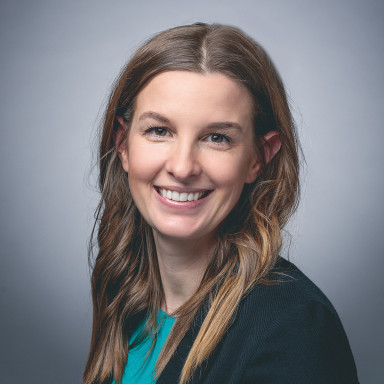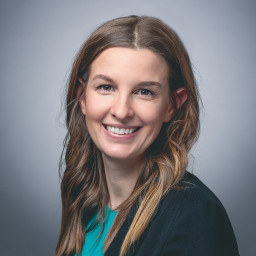On April 29, Novo Nordisk announced that first quarter revenue rose 18% to DKK (Danish Kroner) 42.0bn, ignoring the impact of exchange rates. This was driven by strong growth in Diabetes and Obesity care, with the latter more than doubling.
Operating profits rose 18% to DKK 19.1bn. This was despite a 29% increase in research and development costs due primarily to the advancement of pipeline drugs to late-stage clinical trials.
The group revised its full year expectations higher, to sales growth between 10-14% and a 9-13% rise in operating profits.
Novo Nordisk also plans to expand its buyback programme by DKK 2bn to DKK 24bn.
Shares rose 5.5% following the announcement.
View the latest Novo-Nordisk share price and how to deal
Our view
Novo Nordisk is among the world's leading providers of diabetes treatments, and since diabetes is a chronic disease demand is very reliable. Insulin makes up a touch over 35% of the group's sales, but that's shrinking as it expands into higher-growth treatment areas.
One such area is GLP-1 products to treat type 2 diabetics. These drugs stimulate the body to produce more insulin after eating, avoiding having to inject insulin straight into the body and reducing the chances of complications.
Sales of this category have been impressive and growth of Ozempic has been rapid. The launch of Rybelsus, a tablet form of the treatment, has also added to Novo's growing market share within the diabetes care market.
A dominant market share and attractive end markets would be enough to attract investors' attention on their own, but Novo also runs a pretty tight ship operationally. That's allowed the group to boast operating profit margins just north of 45%.
Historically, the group's also come with a rock-solid balance sheet. Last year we saw the group swing from a net cash position to net debt, due mostly to the Dicerna Pharmaceuticals acquisition. This is little more than a bugbear for now--it's not unusual for a pharmaceutical giant to operate from a net debt position. But Dicerna's smooth transition to the Novo portfolio will be an important factor to watch to help justify the impact.
There are other challenges to keep in mind as well.
Insulin pricing is under pressure in the US, while competition is heating up in the smaller haemophilia business too. So far, the group's newer products and international expansion are more than offsetting those headwinds, but it's something to keep an eye on.
Governments and patients are increasingly unwilling to pay extortionate prices for lifesaving, but chronic, medicines. With health systems emerging from the current crisis with budgets stretched thin, that trend is only likely to continue. The valuation is some way above the long-term average, so any material pricing changes could be a disappointment.
We continue to think Novo offers something distinctive. Pharmaceutical companies with a strong balance sheet and a defensive market aren't a dime a dozen. But the stock's valuation has been rising over the longer term, pushing down the prospective dividend yield, even as the pressures mount. That could be storing up future problems if growth slows.
Novo Nordisk key facts
All ratios are sourced from Refinitiv. Please remember yields are variable and not a reliable indicator of future income. Keep in mind key figures shouldn't be looked at on their own - it's important to understand the big picture.
First Quarter Results (constant currency)
Diabetes care sales rose 16% to DKK 33.3bn. This reflected strong growth in GLP-1 sales which offset a decline in insulin sales. The group's global market share grew from 29.3% to 30.5%, reflecting gains in all geographic regions.
Obesity Care revenue more than doubled to DKK 3.4bn, driven by the introduction of newly approved Wegovy in the US. However, supply chain issues meant the group had to stop new patients from starting treatment in March. Wegovy is expected to become available to new patients again in the second half.
Rare Disease sales rose 3% to DKK 5.4bn, driven by rare blood disorder treatments. The group saw growth across all geographic regions bar Europe, Middle East and Africa.
Sales in North America rose 24% reflecting growth across all categories bar insulin, which declined 15%. International sales rose 13%, reflecting growth in all therapy areas.
Free cash flow was DKK 21.6bn, up from DKK 9.5bn, reflecting higher profits. Net debt was DKK 5.3bn.
This article is original Hargreaves Lansdown content, published by Hargreaves Lansdown. It was correct as at the date of publication, and our views may have changed since then. Unless otherwise stated estimates, including prospective yields, are a consensus of analyst forecasts provided by Refinitiv. These estimates are not a reliable indicator of future performance. Yields are variable and not guaranteed. Investments rise and fall in value so investors could make a loss.
This article is not advice or a recommendation to buy, sell or hold any investment. No view is given on the present or future value or price of any investment, and investors should form their own view on any proposed investment. This article has not been prepared in accordance with legal requirements designed to promote the independence of investment research and is considered a marketing communication. Non-independent research is not subject to FCA rules prohibiting dealing ahead of research, however HL has put controls in place (including dealing restrictions, physical and information barriers) to manage potential conflicts of interest presented by such dealing. Please see our full non-independent research disclosure for more information.

